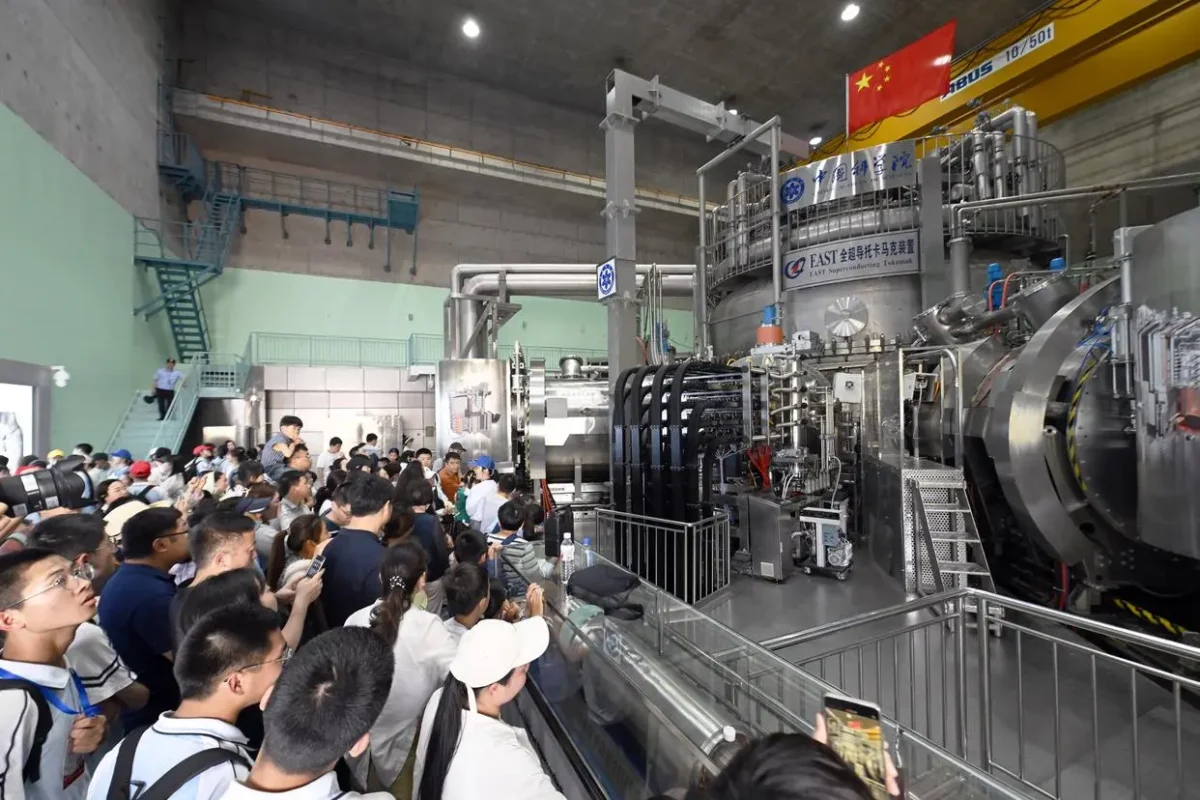The Hefei “artificial sun,” officially known as the Experimental Advanced Superconducting Tokamak (EAST), is a major highlight of China’s advancements in nuclear fusion research. Located at the Institute of Plasma Physics, Hefei Institutes of Physical Science in Anhui Province, EAST is designed to mimic the energy production processes of the sun through nuclear fusion.

On May 18, as part of the 20th Public Science Day organized by the Chinese Academy of Sciences (CAS), EAST was opened to the public, attracting a significant number of visitors. The event provided a unique opportunity for citizens to learn about this groundbreaking technology and its potential to provide a nearly limitless and clean energy source.
During the open house, visitors were given guided tours of the facility, where they could observe the sophisticated equipment and experimental setups that make EAST one of the most advanced fusion reactors in the world. Detailed explanations were provided by staff members about how the Tokamak works, its scientific significance, and the challenges and breakthroughs in achieving sustainable nuclear fusion.
Photographer Zhou Mu from Xinhua News Agency captured the excitement and curiosity of the public as they explored the EAST device. Images showed visitors engaging with the exhibits, taking photos, and listening intently to the explanations provided by the research staff.
EAST operates by using powerful magnetic fields to confine hot plasma in a doughnut-shaped chamber, with the ultimate goal of achieving conditions suitable for nuclear fusion. This process has the potential to generate immense amounts of energy without the harmful emissions associated with fossil fuels.
The public’s visit to the EAST facility not only highlighted the technological achievements of Chinese scientists but also fostered greater public understanding and interest in nuclear fusion research. The event underscored the importance of scientific outreach and education in promoting awareness of cutting-edge technologies that could significantly impact the future of energy production.